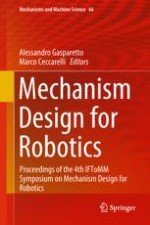2019 | OriginalPaper | Buchkapitel
Social Humanoid Robot SARA: Development and Realization of the Shrug Mechanism
verfasst von : M. Penčić, M. Čavić, B. Borovac, Z. Lu
Erschienen in: Mechanism Design for Robotics
Aktivieren Sie unsere intelligente Suche, um passende Fachinhalte oder Patente zu finden.
Wählen Sie Textabschnitte aus um mit Künstlicher Intelligenz passenden Patente zu finden. powered by
Markieren Sie Textabschnitte, um KI-gestützt weitere passende Inhalte zu finden. powered by
